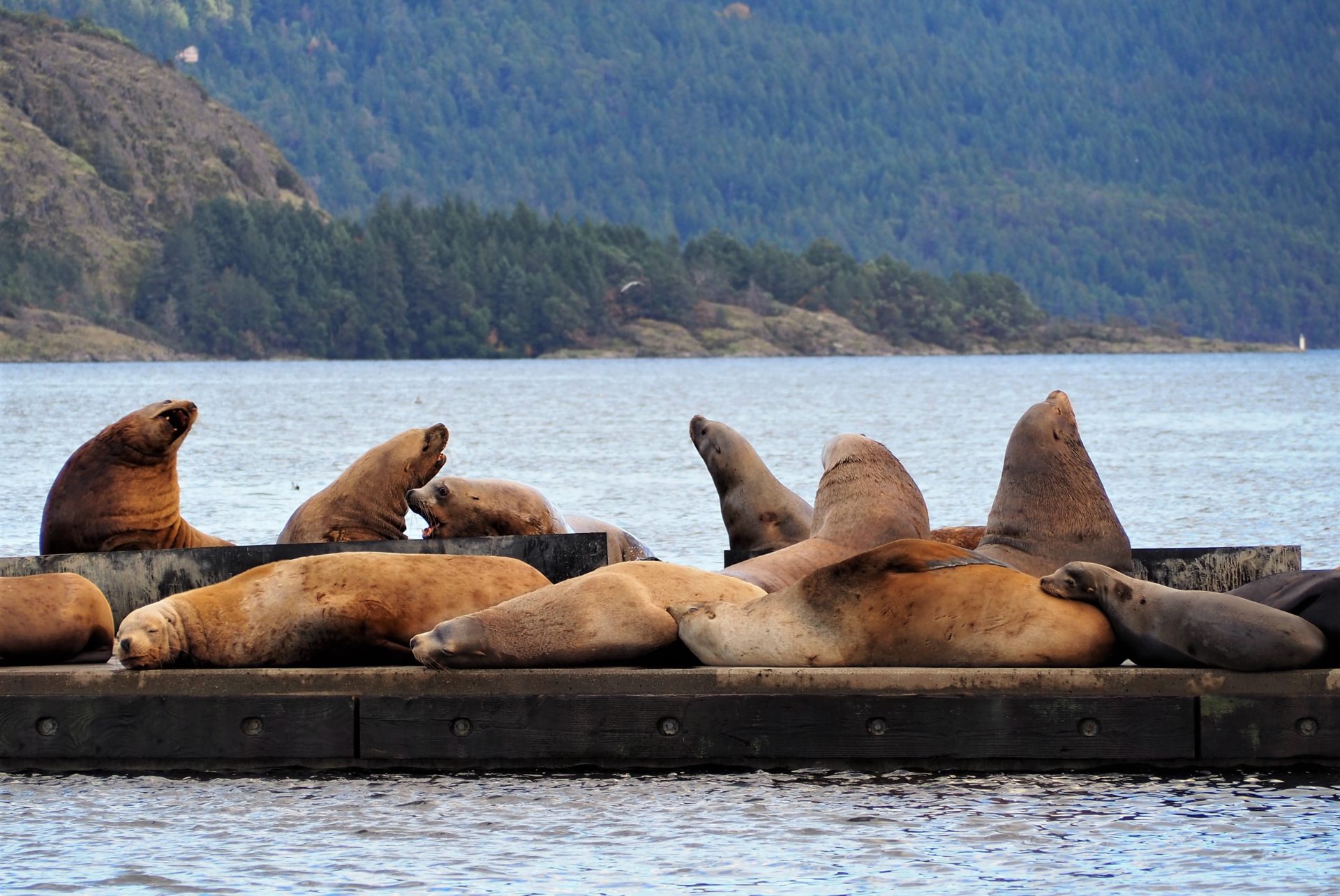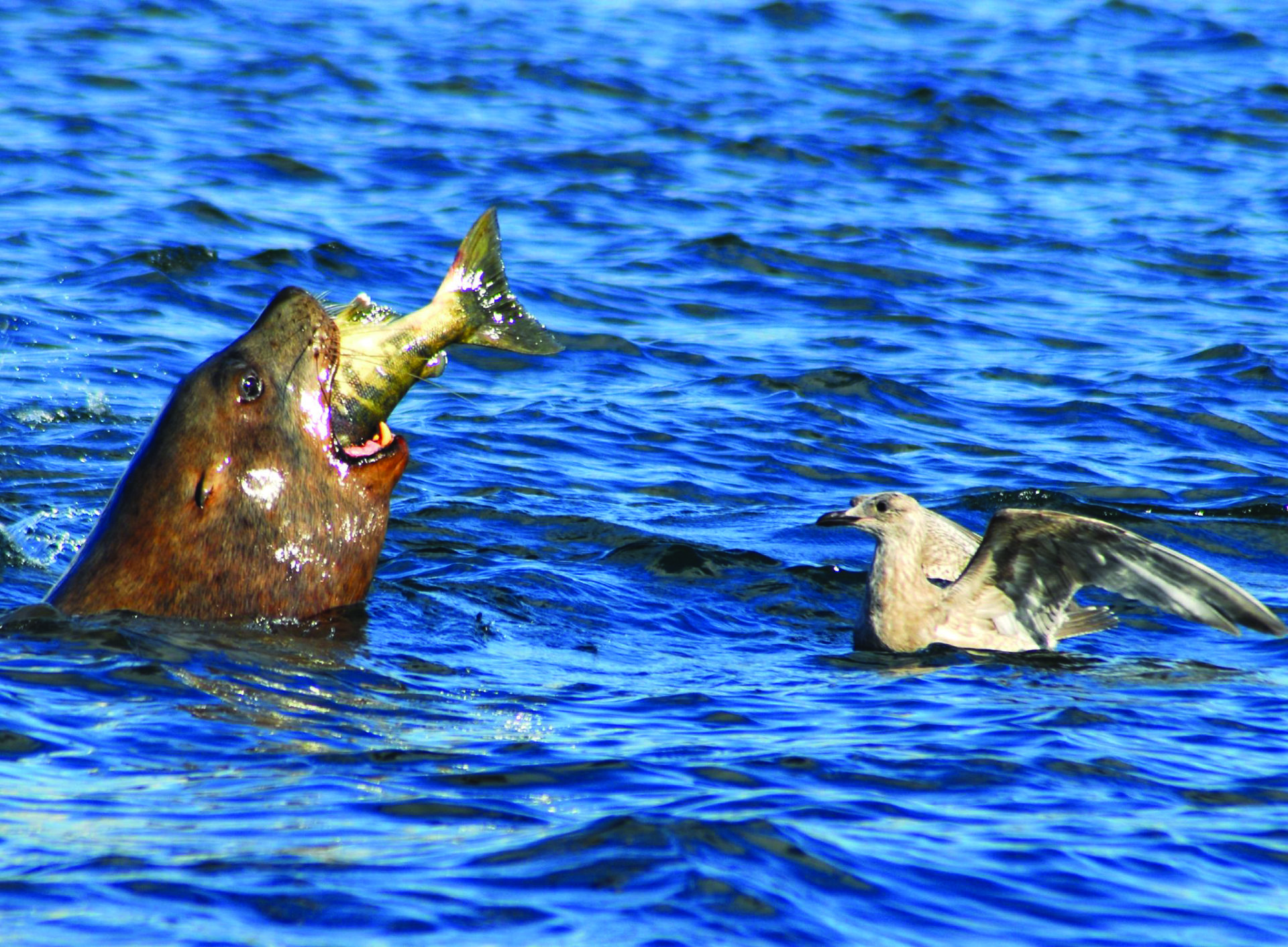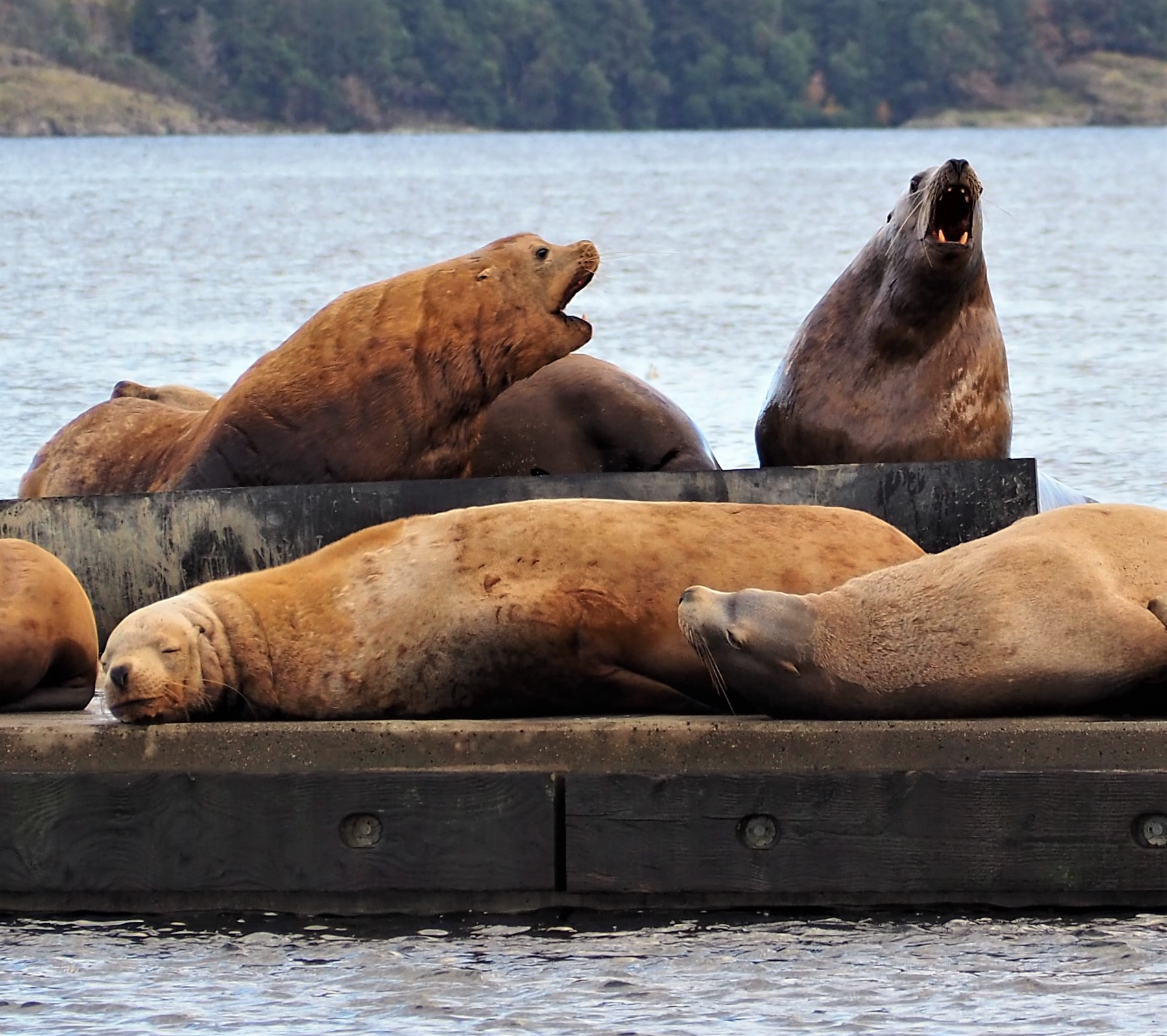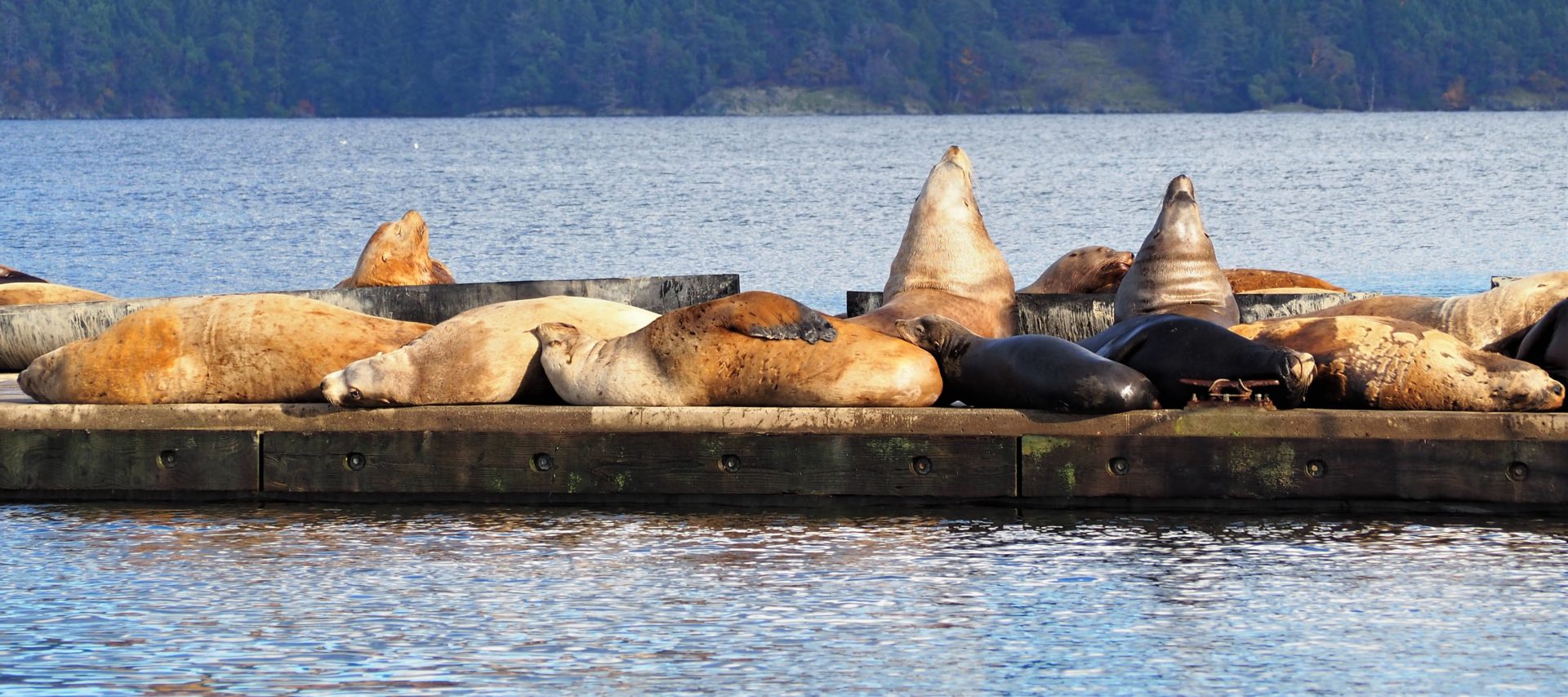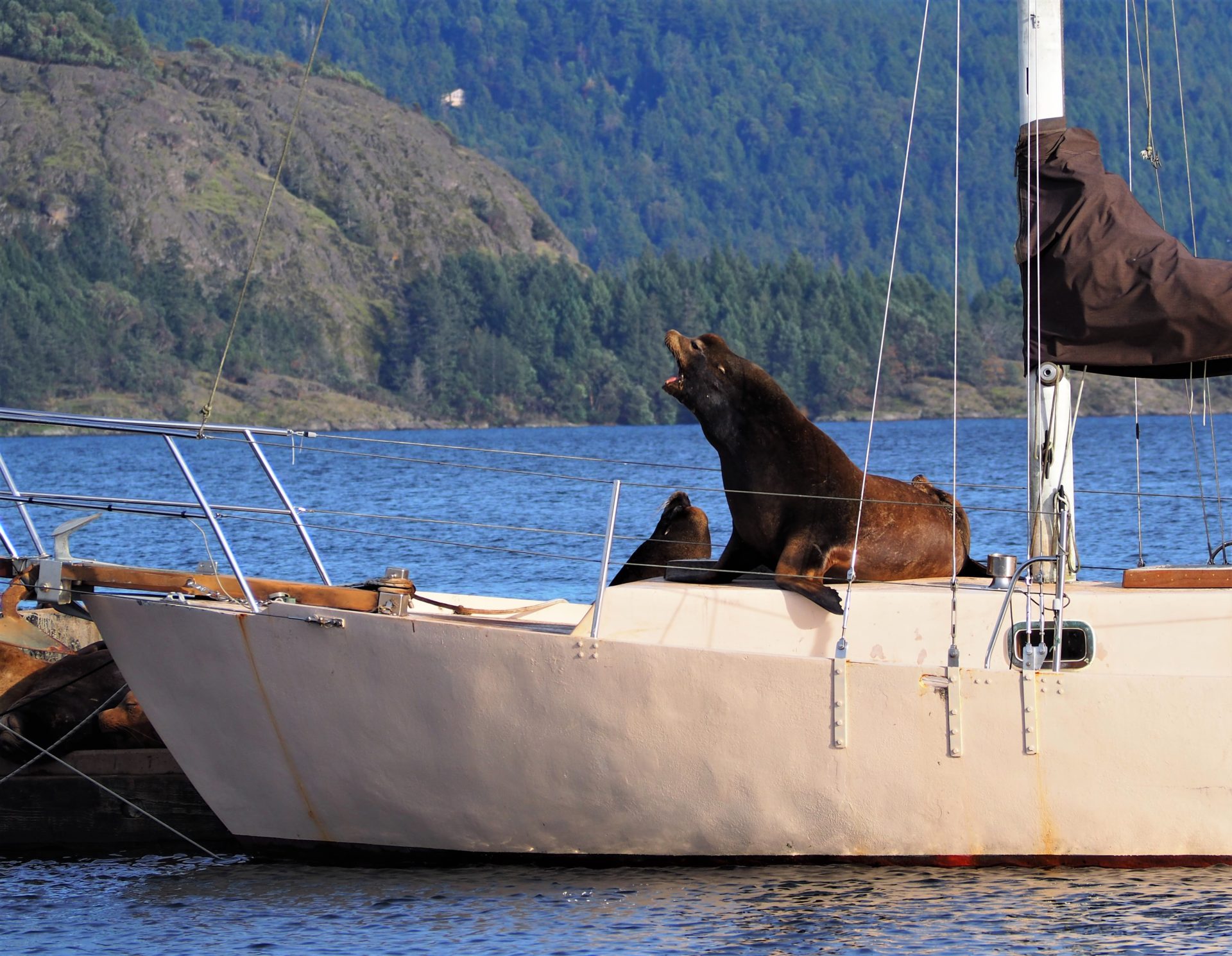The abundant fish in Cowichan Bay make it a popular destination for both seals and sea lions. A big sea lion may eat as much as 16 kg (35 lb) of fish each day! However, what’s good news for seals and sea lions is not such good news for the rivers’ salmon runs. The increasing drought conditions in our watersheds can leave large numbers of salmon waiting in the estuary for increased river flows, making them easy targets for seals and sea lions.
Sea Lions
How do you know it’s November in Cowichan Bay? You can hear and smell the male Steller sea lions (Eumetopias jubatus). These big boys visit Cowichan Bay every November to feast on the salmon returning to the Cowichan and Koksilah Rivers on their way to the spawning grounds. Weighing up to 800 kg, male Steller sea lions are so big that one or two of them can sink a small sailboat, as some locals have recently learned the hard way. Steller sea lions are quite gregarious and communicate with loud roars and deep growls. These sea lions are shallow divers and can hold their breath for approximately 16 minutes underwater. California sea lions (Zalophus californianus) also visit Cowichan Bay to feast on salmon in November. California sea lions are smaller and darker in colour compared to Steller sea lions, and mature males have a bump on their forehead called a sagittal crest.
Look
Photo Credits: Eric Marshall
Listen
Seals
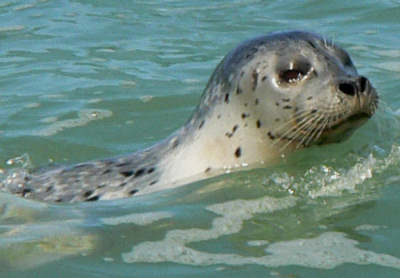
Harbour seals (Phoca vitulina richardsi), sometimes as many as 100, can be found year round in Cowichan Bay. They can be seen hauling out on the log booms, but not on the breakwater because it’s too high. Harbour seals feed on a variety of fish and an individual seal may eat 5 to 7 kg (12-15 lb) of fish per day.
Resources
- Read Times Colonist’s article on sea lions throwing a bachelor party at Cowichan Bay.
- Read more facts about Steller and California sea lions, and Harbour Seals from the University of British Columbia’s Marine Mammal Research Unit.
- Watch videos of sea lions at Race Rocks Ecological Reserve on the southern tip of Vancouver Island.
- Watch a video of sea lion research using GoPros from the Vancouver Aquarium.
- Watch Marine Detective’s video of Steller and California sea lions barking underwater.
- Read a Fisheries and Oceans Canada report on the status of Steller sea lions in Canada.
- Read the Globe and Mail’s article about the proposed BC seal and sea lion hunt.

